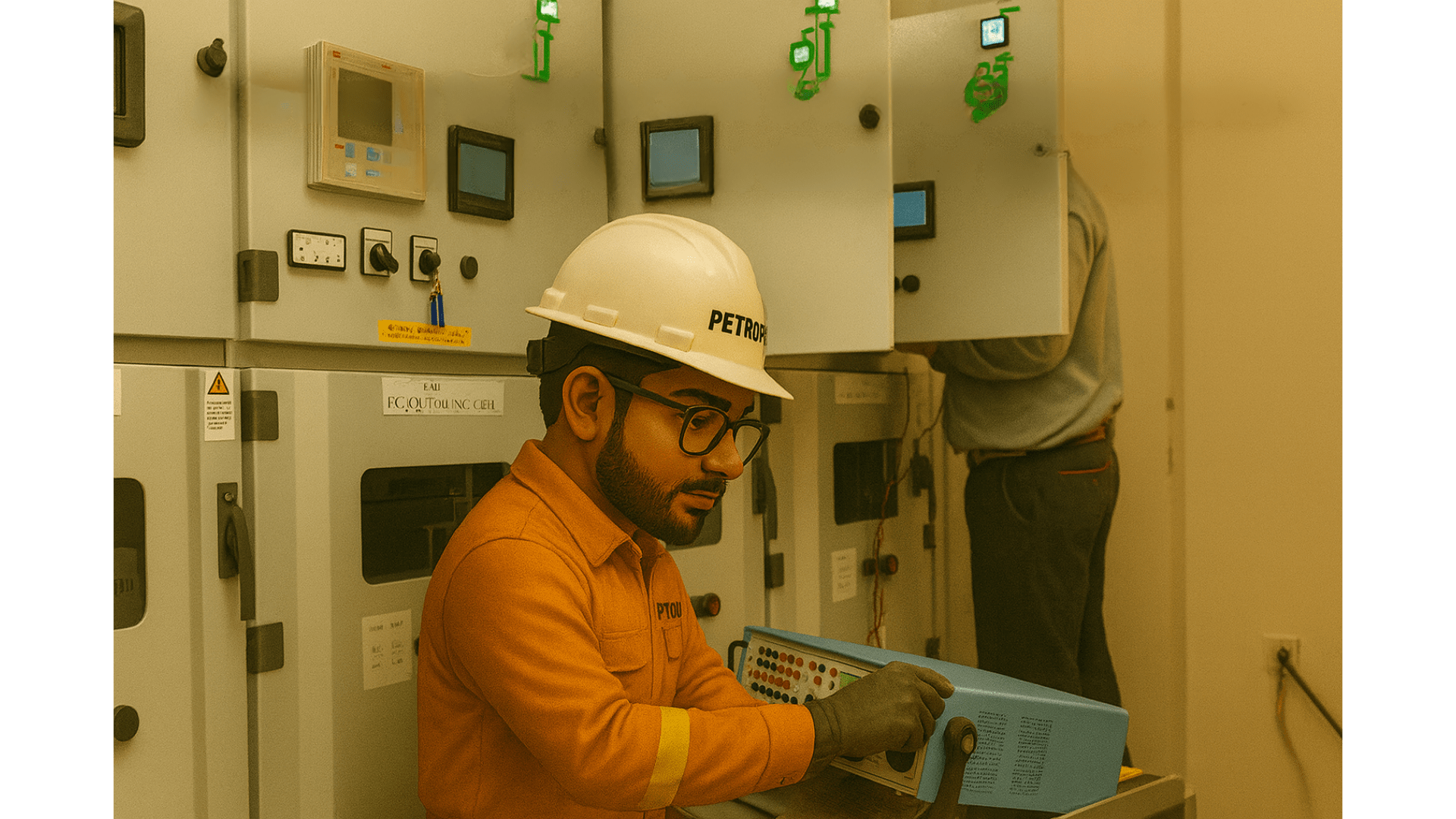Step into the life of Bilal, a protection engineer at Petrozone International in Saudi Arabia. From relay upgrades and shutdown pressure to IEC 61850 testing and breaker challenges, discover how protection engineers safeguard critical power systems every day.
Morning Relay Upgrade Responsibility
Bilal’s alarm rang at 5:30 AM in Jazan. Outside, the city was still quiet, but his mind was already awake. Today was not just another day in the substation. Today, he was tasked with replacing an old electromechanical relay with a new digital numerical relay on a feeder bay that supplied power to a major industrial client.
One mistake, one wrong wire, one missed detail — and an entire production line could go dark.
After his Fajr prayer, Bilal bowed his head and asked the Almighty for forgiveness. Before stepping out, he whispered softly:
“Guide me today, and let me fulfill my duty with honesty.”
And with that, his day began.

The Pressure of Shutdown
By 7:00 AM, Bilal reached the substation. The client’s manager was waiting, tension written across his face.
“Bilal, you have only six hours. The plant cannot afford a delay,” he said firmly.
Bilal nodded. He had heard such words many times before, but the pressure never disappeared. He reminded himself that safety and discipline always come first, no matter the deadline
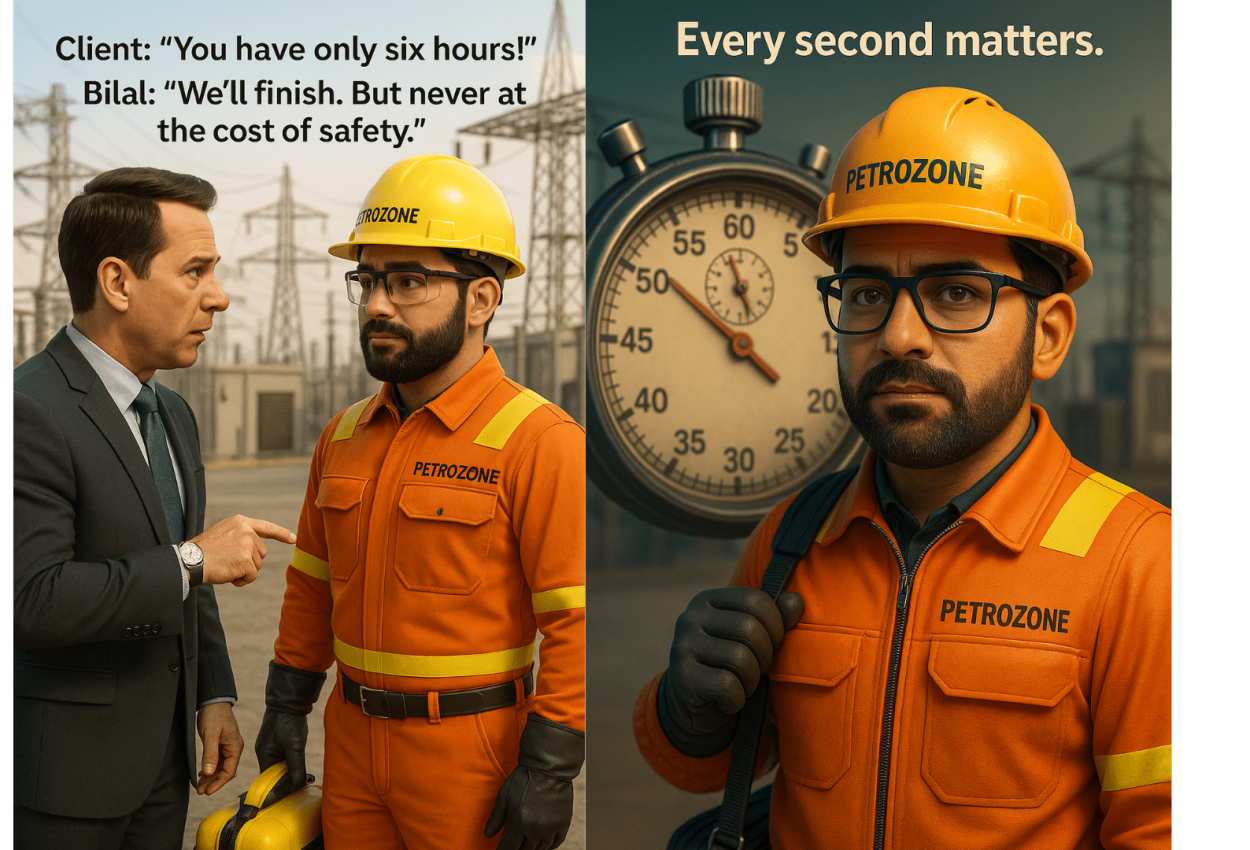
When Bilal opened the panel, the old electromechanical relay stared back at him — scratched, faded, but still proud after decades of service. Before removing it, Bilal carefully noted down all the relay settings. He then turned to the young technician beside him.
“Label every wire before removing it,” Bilal instructed.
“All of them?” the technician asked hesitantly.
“All of them,” Bilal replied firmly. “If we miss even one, we lose time. And time is something we do not have today.”
The wires were tagged, the drawings updated, and finally, the old relay was removed. The panel looked strangely empty — like history itself had just been taken out.
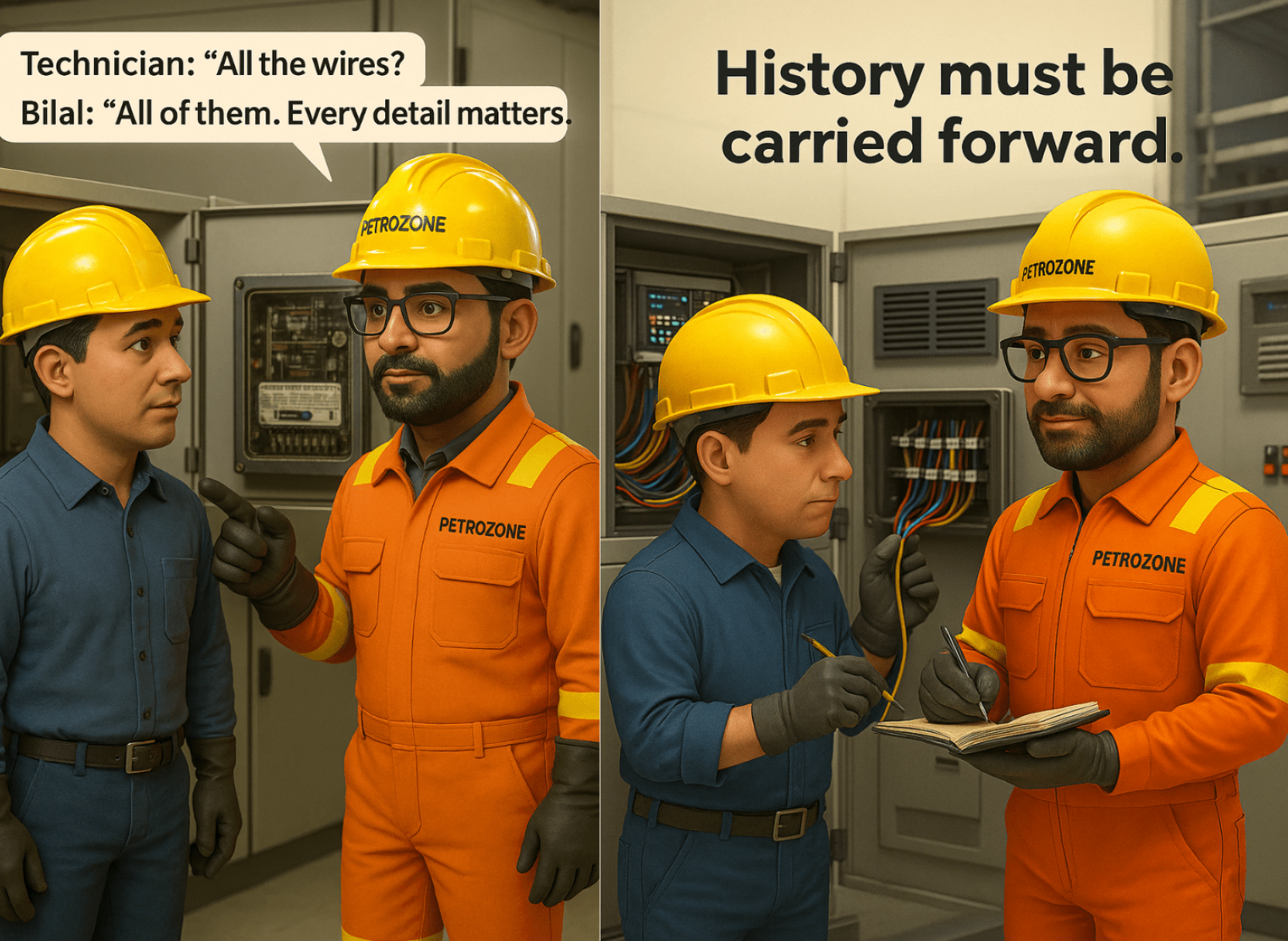
The new digital relay was mounted neatly. Wires were reconnected carefully.
“Power it up,” Bilal instructed.
But nothing happened. The relay stayed dark.
The client’s manager shifted uneasily. Every minute felt heavy.
Bilal checked the DC supply and found a loose lug. He tightened it, and the relay finally came to life. The glowing screen felt like a heartbeat returning. The room filled with relief.
Bilal checked the DC supply and found a loose lug. He tightened it, and the relay finally came to life. The glowing screen felt like a heartbeat returning. The room filled with relief.
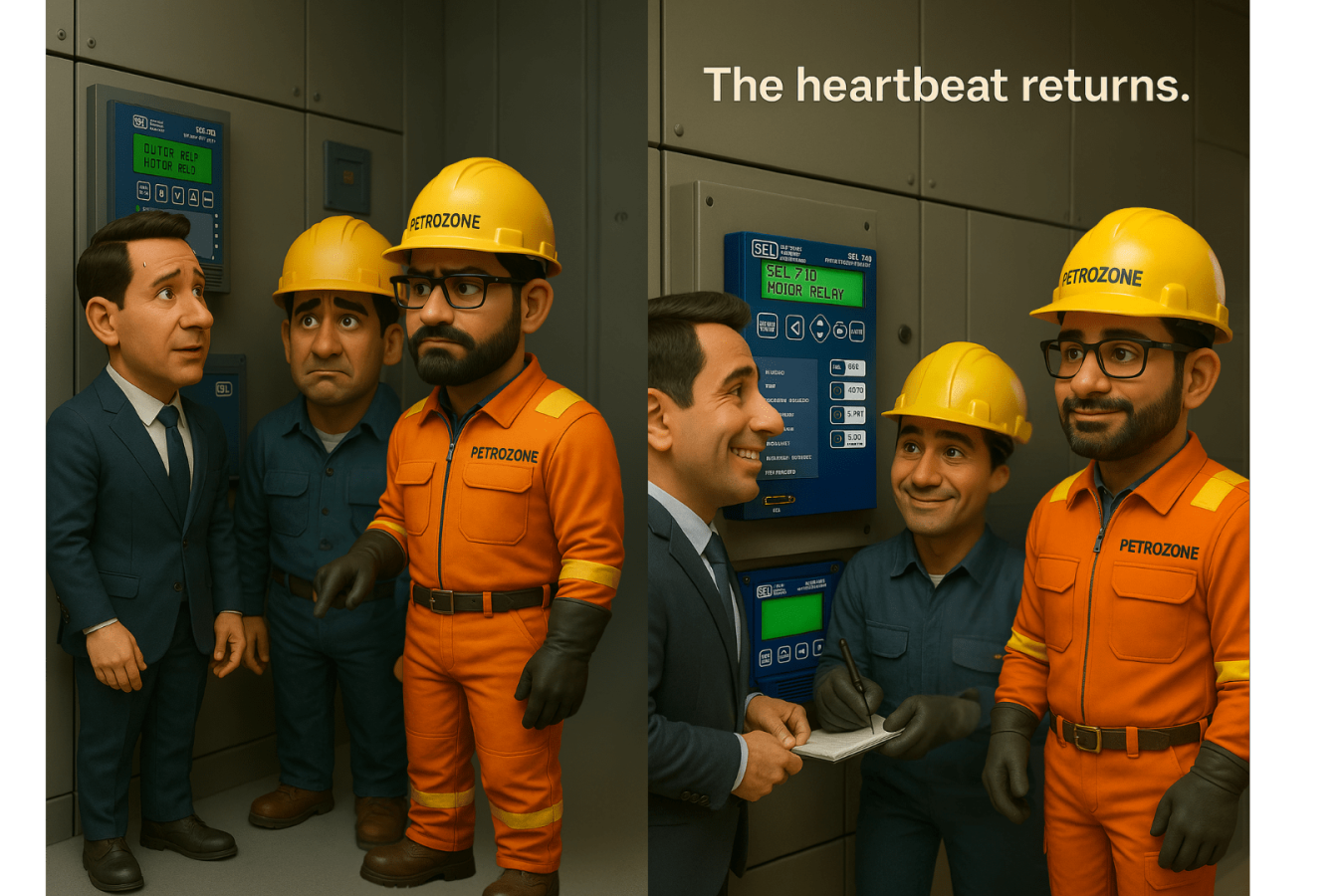
Breathing Life into the Relay
With the relay alive, Bilal moved to the next step — configuration. He connected his laptop and began setting it up, carefully transferring the protection values from the old system into the new one.
He set the overcurrent and earth fault pickups, adjusted the time multiplier, and aligned the voltage and frequency parameters with the system requirements.
The technician watched quietly as Bilal worked, realizing that this part was not just about typing numbers into software. It was about carrying forward years of protection philosophy into a modern device.
When the last setting was saved, Bilal leaned back. The relay was no longer just hardware. It was ready to protect.
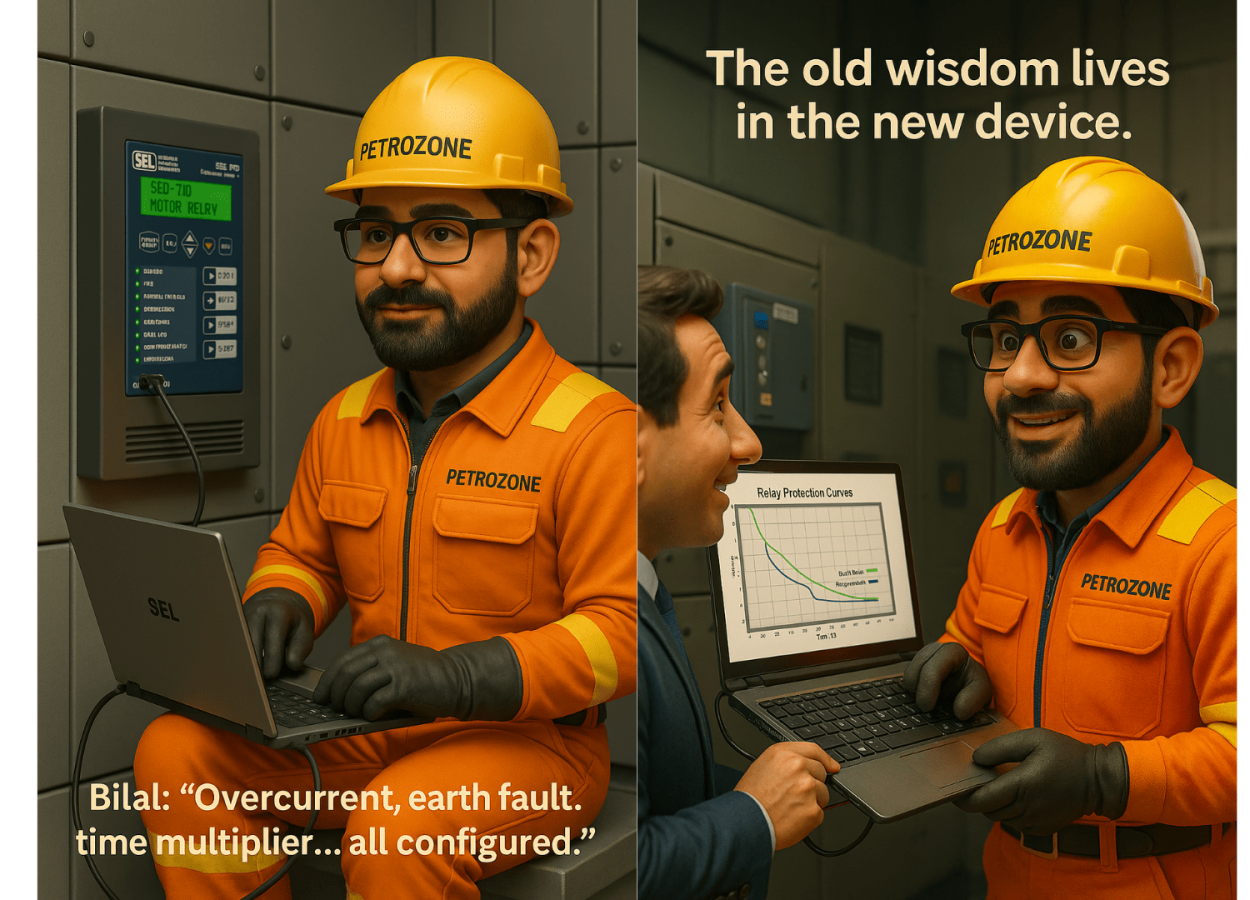
But power systems always have their twists. The relay was alive and configured, but it remained silent to SCADA. No GOOSE messages were received, and the time synchronization drifted.
The trainee, now nervous, asked, “Sir, is the relay faulty?”
Bilal shook his head calmly. “No. It’s not the relay. It’s the path.”
He traced the fiber connections and found a strand plugged into the wrong port. One small correction, and the relay began to speak — messages flashing across the screen, SCADA signals lighting up.
“Remember this,” Bilal told the trainee. “Sometimes one tiny fiber decides the fate of an entire system.”
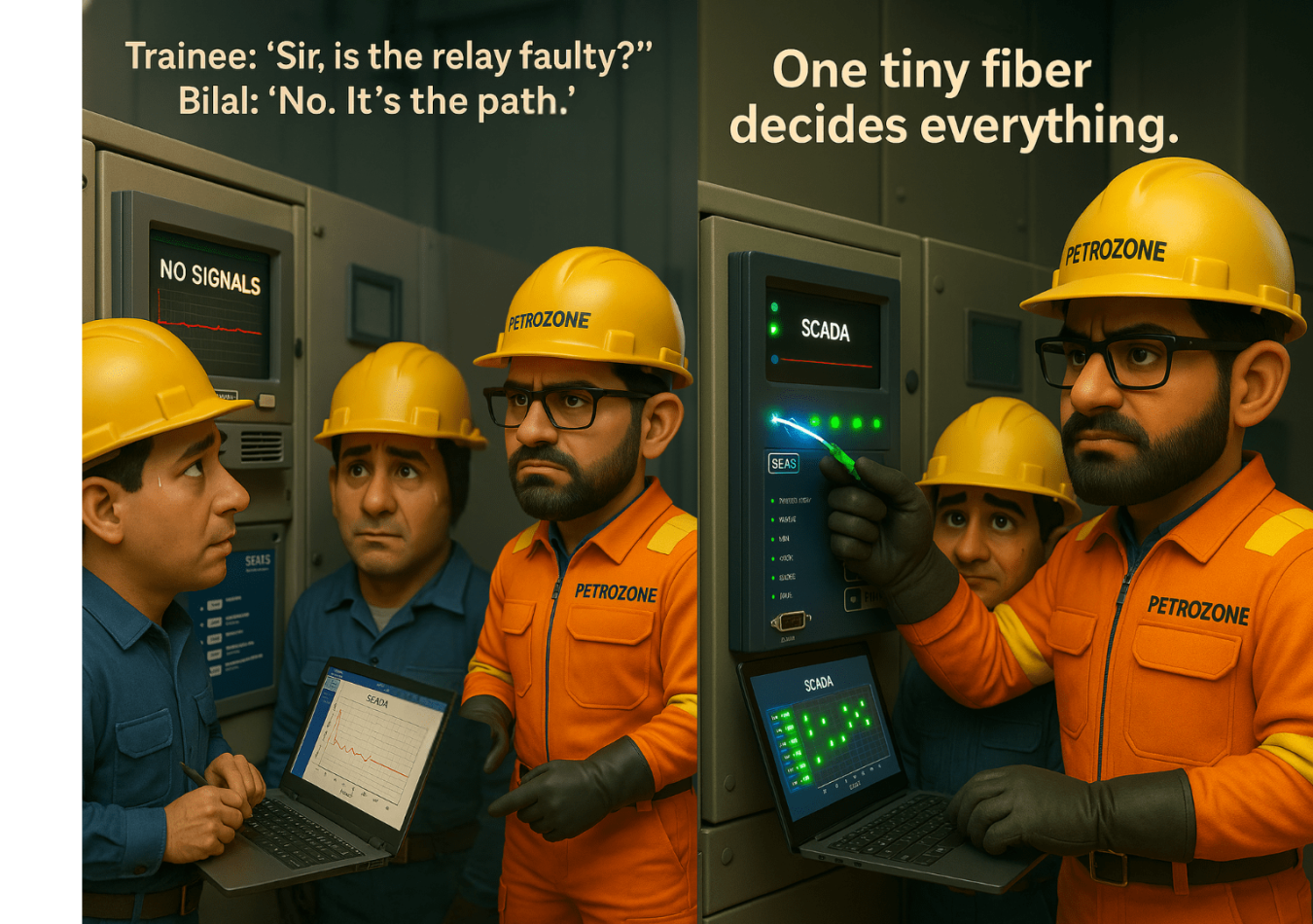
Breaker Trip Troubleshooting in Relay Commissioning
Testing began. Using the OMICRON, Bilal injected faults and verified protections. Overcurrent worked. Earth fault worked. Differential worked.
Then came breaker trip. The relay gave the command — but nothing happened. The breaker didn’t move.
The client’s face turned pale. “Bilal, we cannot afford this!” he said in frustration.
Bilal stayed calm. He checked the circuit, opened the trip coil, and found a blown fuse. Within minutes, he replaced it and tested again.
This time, the sound of CLACK! echoed through the room as the breaker tripped perfectly. The team let out a quiet sigh of relief.
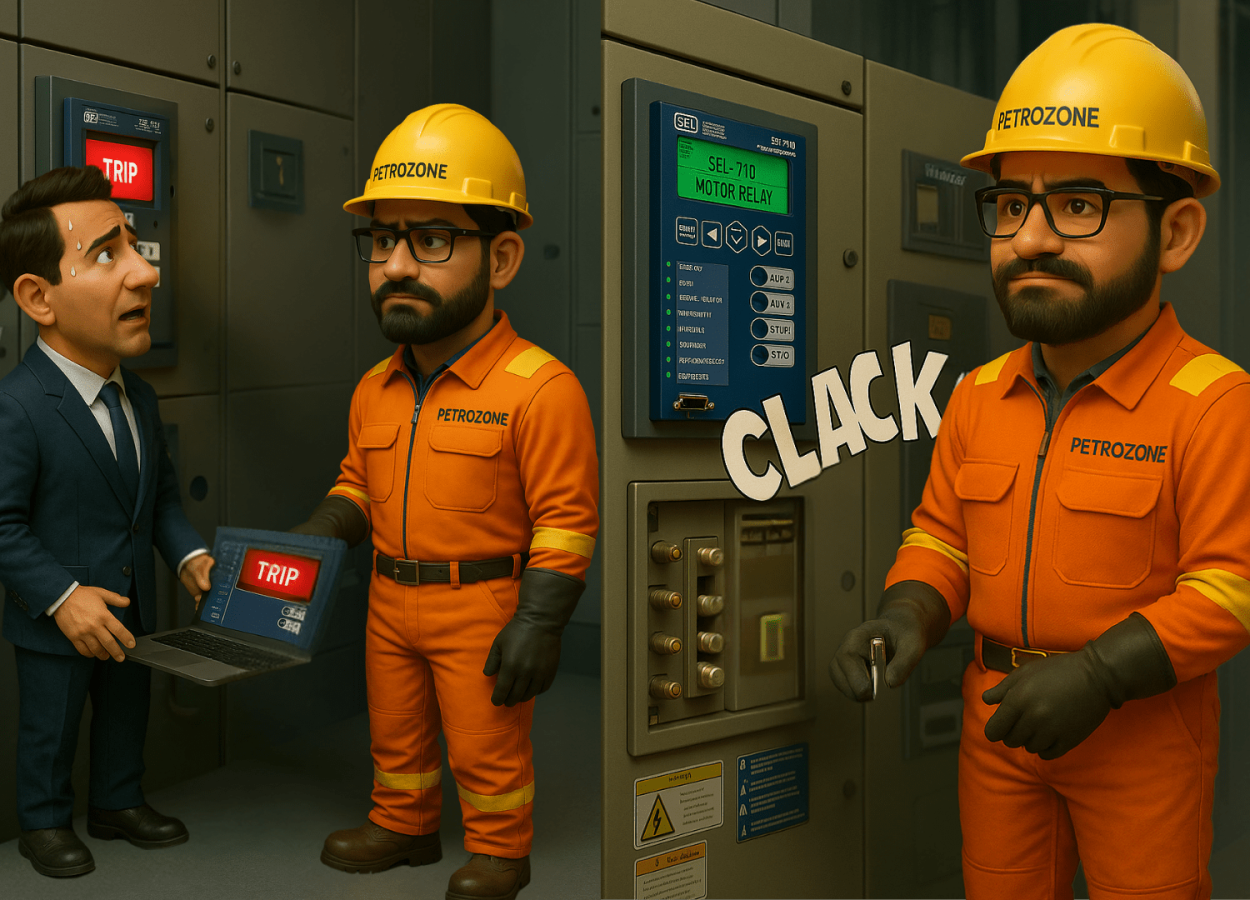
The Final Switch
The sun was already setting, and the shutdown window was almost closed. Bilal went through his final checklist. CTs and VTs were healthy, trip circuits were confirmed, SCADA signals were live.
He looked at the client’s manager, who gave a small nod.
Bilal closed the breaker. The feeder came alive. Current surged. The new relay stood steady, protecting silently. The plant was safe. The deadline was met.
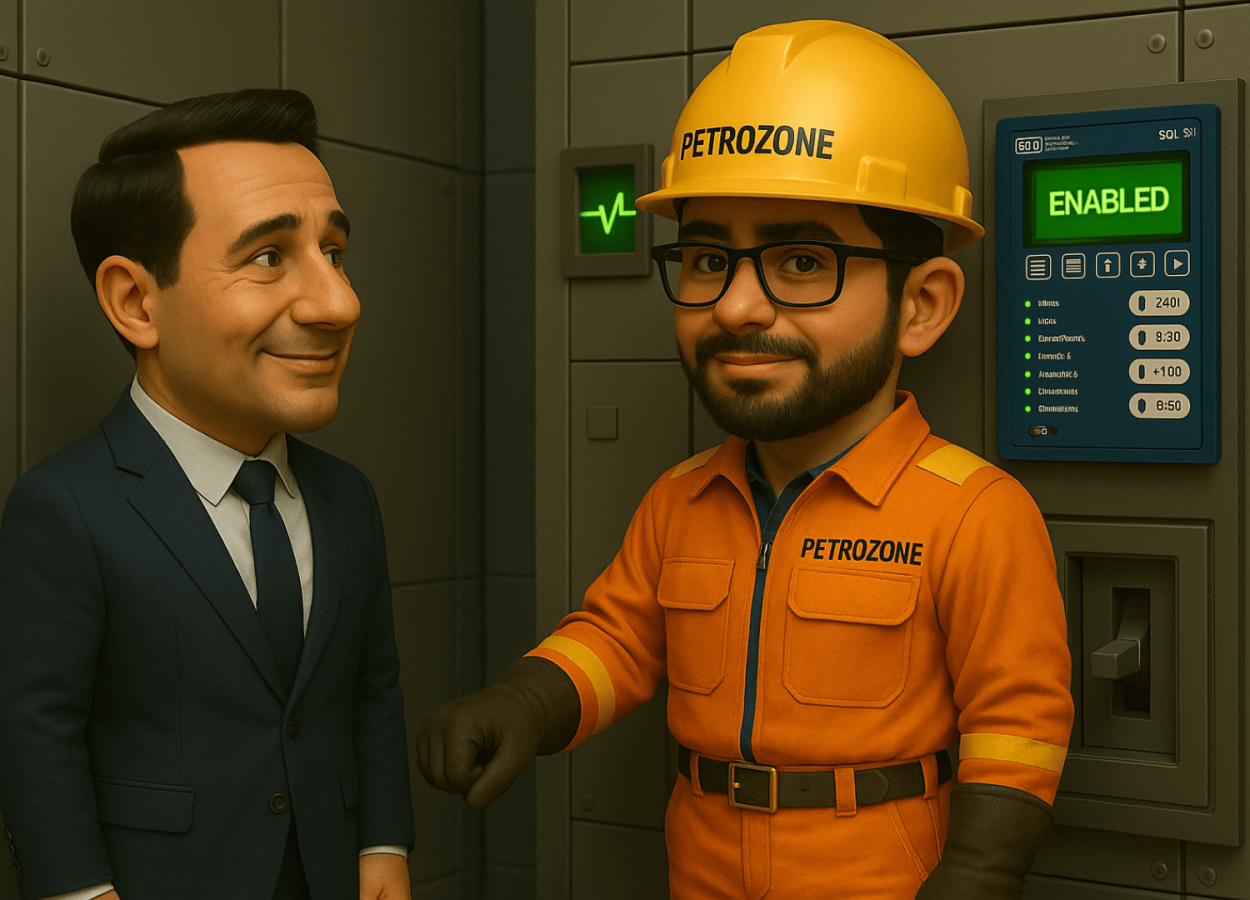
Reflection on the Drive Home
On the road back, Bilal thought about the day. A loose lug, a silent fiber, a blown fuse, and the weight of client pressure — each one could have turned into failure. But discipline, patience, and experience had turned every challenge into a solution.
“Our victories are invisible,” Bilal thought. “But without them, industries would fall.”

Bilal’s story is not only his own. It is the story of every protection and testing engineer who works in silence, under pressure, in conditions most people will never understand.
They are given shutdown windows of only a few hours, where every minute matters. They work while managers watch them nervously, while equipment resists change, and while systems demand perfection.
And yet, they stay calm. They troubleshoot. They teach. They protect.
Their victories are rarely celebrated. When a relay trips correctly, no one claps. When a CT or VT performs flawlessly, no one notices. When the SCADA shows the right signals, the world just moves on. But when something goes wrong, it is always their shoulders that carry the blame.
This is why protection and testing engineers deserve more recognition. Their work is not just about wires, relays, and testing kits. It is about protecting lives, equipment, and entire industries.
This blog is a tribute to all of them — the silent guardians of power systems. The ones who balance discipline with patience, and pressure with calmness. The ones who make sure the world keeps running.
At Petrozone International, we see you. We respect your craft. And we stand with you.

To All Smart Protection Engineers — Join Us
If you are a protection or testing engineer reading this, know this: your efforts matter. Your victories may be invisible to many, but to us, they are priceless. At Petrozone, we don’t just see engineers as workers. We see them as protectors of industries.
Life at Petrozone means more than projects and deadlines. It means working on challenging assignments where your skill truly makes a difference. It means being part of a team that respects your effort and values your knowledge. It means growing with a company that is building the future of power systems in Saudi Arabia and beyond.
We are always looking for passionate engineers who want to make an impact. If you would like to be part of Petrozone’s journey, we invite you to send us your CV at careers@petrozoneintl.com.
Because at Petrozone, your work will never go unnoticed. Here, you are not just an engineer — you are a guardian of power.

To Maintenance & Procurement Teams Across Industries in Saudi Arabia
If your plant or substation requires protection relay testing, relay upgrades, IEC 61850 configuration, or complete testing and commissioning services in Saudi Arabia, don’t wait for a failure to disrupt operations — let Petrozone safeguard your power systems today.
Related Links & Further Reading
Looking to explore more about our services and expertise? Check out the following pages:
🔗 Cable Termination Services – Discover how we handle MV cable terminations with precision and reliability.
🔗 Erection & Installation – Learn more about our process for safely installing electrical equipment and infrastructure.
🔗 Testing & Commissioning – Explore our comprehensive testing protocols that ensure safe energization.
🔗 Contact Us – Got a similar project? Reach out to us today and let’s get it done, the Petrozone way.
Protection Relay Testing & Commissioning (FAQs)
Most frequent questions and answers
Protection relay testing verifies that electrical protection relays operate correctly during faults, ensuring safety and preventing costly downtime. For industries in Saudi Arabia such as oil & gas, petrochemicals, steel, and utilities, relay testing is critical to avoid power outages and equipment failures.
A typical relay upgrade can take anywhere from a few hours to a couple of days, depending on the complexity of the system and the type of relay (electromechanical, static, or digital numerical). In industries where shutdown windows are limited, Petrozone ensures upgrades are executed efficiently without compromising safety.
IEC 61850 testing involves verifying the digital communication and interoperability of intelligent electronic devices (IEDs) in substations. This includes GOOSE messaging, MMS protocols, and time synchronization. Industries in Saudi Arabia are increasingly adopting IEC 61850 for faster fault isolation and smarter grid operations.
Petrozone International provides end-to-end electrical testing and commissioning services in Saudi Arabia, backed by certified engineers, IEC/IEEE-compliant procedures, and advanced equipment such as OMICRON. Our proven expertise supports utilities, oil & gas, petrochemical plants, steel, cement, and large industrial clients.

